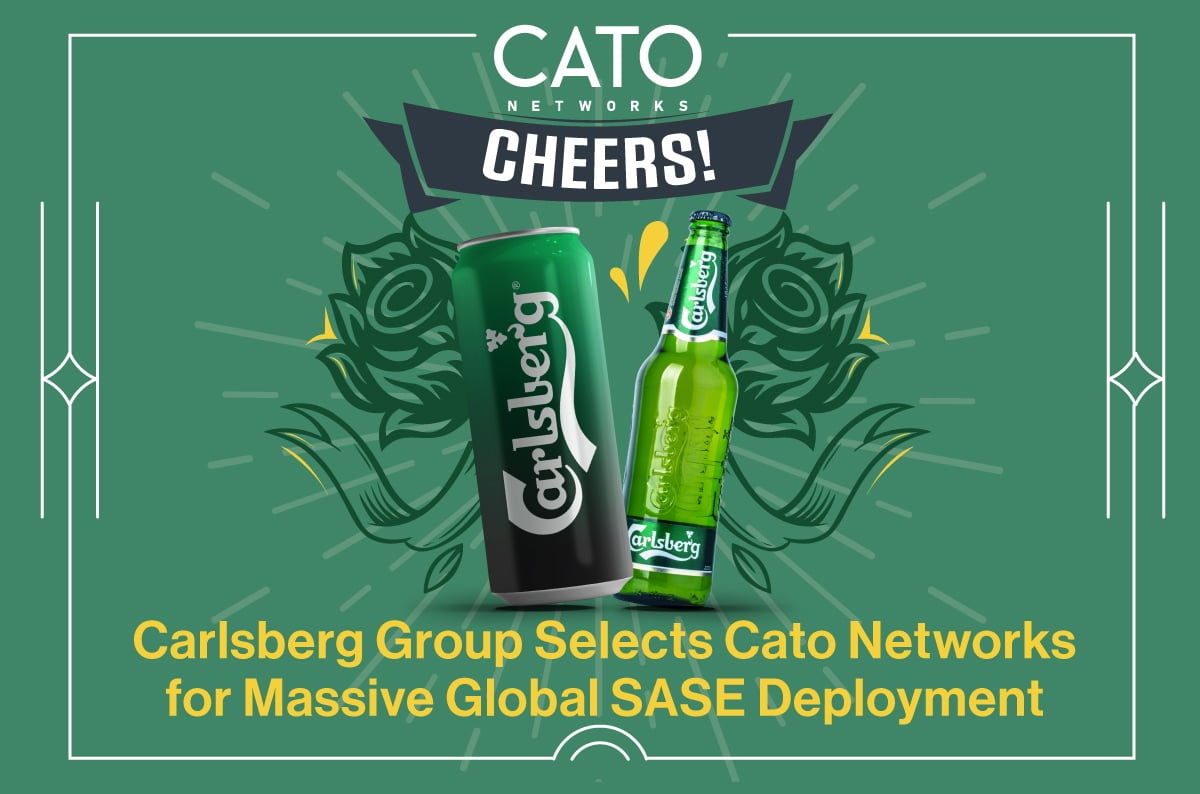|
Listen to post:
Getting your Trinity Audio player ready...
|
Today, we announced that Carlsberg, the world-famous brewer, has selected Cato SASE Cloud for its global deployment. It’s a massive SASE deployment spanning 200+ locations and 25,000 remote users worldwide, replacing a combination of MPLS services, VPN services, SD-WAN devices, remote access VPNs, and security appliances.
The mix of technologies meant that Carlsberg faced the operational problems associated with building and maintaining different service packages. “Some users would receive higher availability and others better capabilities, but we couldn’t bring it all together to create an à la carte set of services that could apply to any office anywhere and facilitate our global IT development,” says Laurent Gaertner, Global Director of Networks at the Carlsberg Group.
With Cato, Carlsberg expects to do just that — deliver a standard set of network and security services everywhere. Carlsberg will be replacing MPLS, VPN, and SD-WAN services with Cato SASE Cloud and Cato’s global private backbone. Remote VPN services will be replaced with Cato ZTNA. And the mix of security appliances will be replaced with the security capabilities built into Cato SASE Cloud.
All of this is possible because every Cato capability is available everywhere in the world. While our competitors talk about certain PoPs holding some capabilities but not others, Cato delivers the full scope of Cato SASE Cloud capabilities from all 80+ PoP locations worldwide, servicing 150+ countries. Chances are that wherever your users are located, Cato SASE Cloud can connect and secure them.
The Apple of Networking Makes Deployment Easy
Normally, the complexity of such a project would be daunting. Large budgets and many months would be spent assessing, deploying, and then integrating various point products and solutions.
Not so with Cato.
With Cato SASE Cloud, there’s one product to select, deploy, and manage – the Cato SASE Cloud. “Owning all of the hardware makes Cato so much simpler to deploy and use than competing solutions,” says Tal Arad, Vice President of Global Security & Technology at Carlsberg. “We started referring to them as the Apple of networking.” With rapid deployment possible, Cato helps Carlsberg get value out SASE faster.
Nor is Carlsberg alone in that view. In February 2023, Häfele, a German family enterprise based in Nagold, Germany, suffered a severe ransomware attack forcing the company to shut down its computer systems and disconnect them from the internet. At the time, Häfele was in an RFP process to select a SASE vendor with Cato being one of the candidates.
Cato SASE Identified as a “Leader” in GigaOm Radar report | Get the ReportInstead of paying the ransom, the Häfele team turned to Cato. Over the next four weeks, Häfele worked with Cato and restored its IT systems, installing Cato Sockets at 180+ sites across 50+ widely dispersed countries such as Argentina, Finland, Myanmar (Burma), and South Africa. “The deployment speed with Cato SASE Cloud was a game changer,” said Daniel Feinler, CISO, Häfele. “It was so fast that a competing SASE vendor didn’t believe us. Cato made it possible.”
The strategic benefits of being able to rapidly deliver a consistent set of services worldwide can’t be overemphasized. IT leaders have long realized the value of a single service catalog to offer the departments and business units they service. In theory, this would streamline service delivery and simplify management. Solutions could be fully tested and approved and then rolled out across the enterprise as necessary. Operational costs would be reduced by standardization.
Practically, though, worldwide service catalogs are frustrated by regional differences. MPLS services aren’t available everywhere so they can’t be applied to all offices. Even where MPLS services are available, their high costs may be difficult to justify for smaller offices and certainly for today’s home offices. Delivering security appliances also isn’t always possible, particularly when we’re speaking about securing remote users not sites. The end result? What IT thought was to be a standardized set of services and capabilities accumulates so many differences that the exception becomes the new standard.
With Cato’s ubiquity and ability to connect any edge, anywhere enables true service standardization. No matter the type of site or location of remote user, a standard set of security and networking services can be provided. With one set of proven services, IT can immediately reduce its operational overhead from having to kludge together custom solutions for every region – and worse – every site.
To learn more about the Carlsberg deployment, read the press release here.










